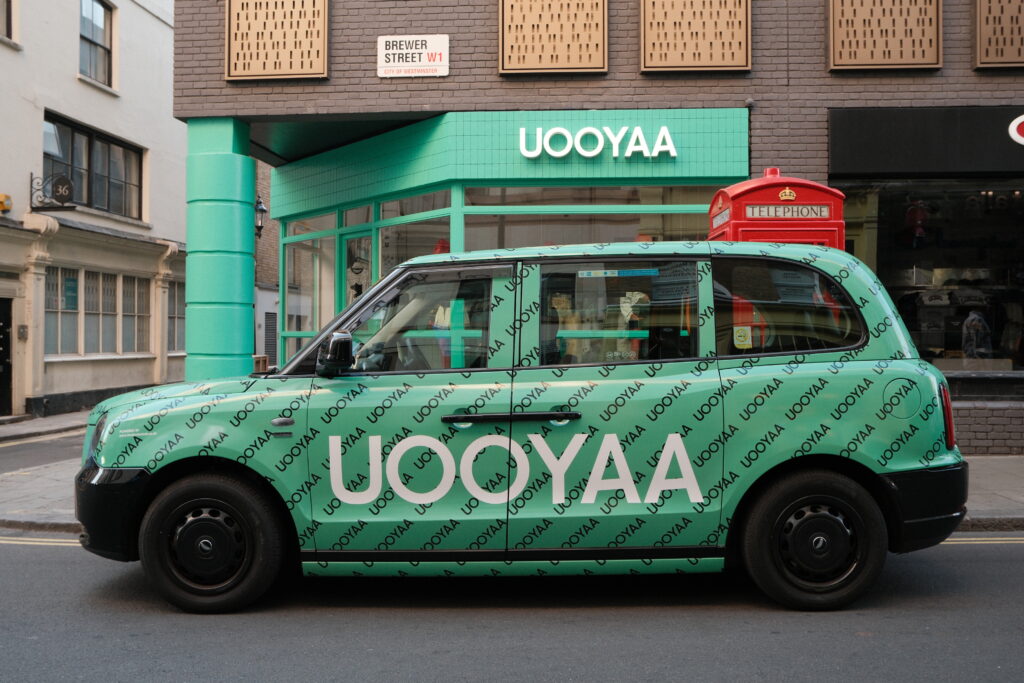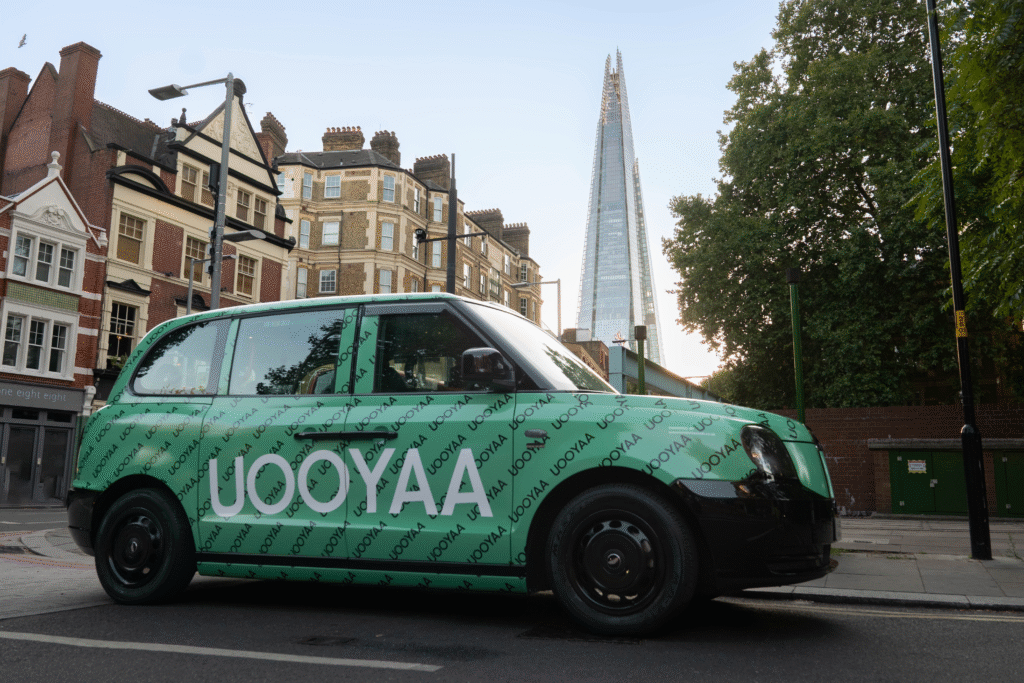In London’s vibrant but crowded marketplace, brands are constantly searching for ways to cut through the noise. While digital ads are easily skipped and static billboards are confined to one spot, London taxi advertising has proven itself as one of the most iconic and effective outdoor advertising formats available. In 2025, it’s more than just a moving billboard; it’s a premium marketing platform that combines mobility, trust, and unparalleled reach.
With over 19,000 licensed black cabs navigating the city daily, your brand can reach a diverse audience of millions, from high-net-worth individuals to international tourists. A single branded taxi can generate up to 8 million impressions every month, making it a highly efficient way to build brand awareness. This guide covers everything you need to know about planning, executing, and measuring a successful London taxi advertising campaign.
Why Advertise on London Taxis? The Core Benefits?

Taxi advertising offers a unique blend of benefits that other media formats struggle to match. Its power lies in its constant presence and respected status within the city.
- Unmatched Mobility and Reach: Taxis go where the people go. Unlike a fixed poster, your advert travels through London’s busiest and most valuable postcodes, including Heathrow, the West End, Canary Wharf, and Knightsbridge. This ensures your message is seen by a wide and varied audience.
- Premium Brand Association: The London black cab is an icon of quality and reliability. Advertising on one instantly gives your brand a sense of prestige and trustworthiness, helping you stand out from competitors.
- High Recall Among Key Audiences: Taxi advertising is memorable. Research shows that over 80% of ABC1 adults can recall a taxi ad they’ve seen recently. This high recall rate means your marketing spend is working harder to build lasting brand recognition.
- A Captive Audience: Interior ads, such as on tip seats or digital screens, engage passengers for the entire duration of their journey. This is a golden opportunity for more detailed messaging, QR code scans, or driving app downloads.
The Formats: Choosing Your Canvas
London taxi advertising offers a range of formats to suit different campaign goals and budgets.
- Full Wraps: For maximum impact, a full wrap transforms the entire vehicle into a 360° mobile billboard. It’s impossible to miss and is ideal for major brand launches or building a dominant market presence.
- Supersides: These large panels on the sides of the taxi offer a balance of high visibility and cost-effectiveness. They are perfect for campaigns that require a broad reach across a larger fleet.
- Interior Advertising: Ads inside the cab, such as on tip seats or receipts, are perfect for direct-response marketing. Passengers have a long dwell time, making them more likely to interact with your message.
Planning Your Campaign: A Step-by-Step Guide

A successful campaign starts with a clear plan. Here are the key steps to consider:
- Define Your Objectives: Are you aiming to build brand awareness, drive sales, or promote an event? Your goal will determine the best format and campaign duration. For brand building, an 8–12 week campaign is recommended, while shorter 4-week bursts are ideal for events.
- Identify Your Target Audience: Are you targeting business professionals in the City, tourists in Covent Garden, or luxury shoppers in Mayfair? Taxis can be strategically routed to align with your key audience hotspots.
- Set Your Budget: Costs vary by format, duration, and fleet size. A full wrap typically costs £3,000–£4,000 per month per taxi, while supersides are around £500–£700. Interior ads are the most affordable option, at £100–£200 per month.
- Develop Your Creative: Your design needs to be bold, clear, and easy to read from a distance. Keep headlines short (under 7 words) and use high-contrast colours. Make sure any call-to-action, like a QR code, is large enough to be scanned easily.
Measuring Success and ROI
One of the biggest advantages of modern taxi advertising is its measurability.
- Digital Integration: QR codes, unique URLs, and promo codes are simple but effective ways to track how many people are responding directly to your ads. This data can be fed into your analytics to measure conversions and ROI.
- Reach and Frequency Data: GPS data from taxis provides detailed insights into journey patterns, allowing you to estimate the number of impressions your campaign is generating in specific areas.
- Brand Lift Studies: For larger campaigns, pre- and post-campaign surveys can measure the uplift in brand awareness, perception, and purchase intent among your target audience.
The Future: Sustainability and Technology
The London taxi fleet is becoming greener, with most new vehicles now being electric or hybrid. This allows your brand to advertise sustainably, aligning with the values of modern consumers.
Technology is also playing a bigger role. Digital taxi tops and interior screens allow for dynamic content that can be updated in real-time, offering even greater targeting possibilities.
Conclusion
London taxi advertising is a powerful, versatile, and prestigious marketing tool. It offers unparalleled reach across the capital, builds brand trust through its iconic status, and provides measurable results. Whether you’re a global brand launching a new product or a local business looking to dominate your neighbourhood, advertising on London’s black cabs is a smart investment that will keep your brand moving in the right direction.
FAQs
1. How much does taxi advertising cost in London?
Costs range from £100–£200 per month for interior ads to £3,000–£4,000 per month for a full wrap. Supersides offer a mid-range option at £500–£700 per month. Prices vary based on fleet size and campaign length.
2. How quickly can a taxi advertising campaign be launched?
A campaign can be launched surprisingly quickly. A single taxi can be wrapped in 3–5 days, with larger fleets typically ready within 3–4 weeks after the artwork is finalized.
3. Can I target specific areas of London?
Yes. While taxis travel across the city, fleets can be based in specific zones. This allows you to concentrate your advertising efforts in areas most relevant to your target audience, such as business districts or tourist hotspots.
4. How is the impact of taxi advertising measured?
Impact is measured using GPS data for reach estimates, as well as direct response mechanisms like QR codes, unique URLs, and promo codes to track conversions. Brand lift studies can also measure changes in brand perception.
5. Is taxi advertising better than bus or Underground advertising?
Taxi advertising offers unique advantages. Unlike buses, taxis can access premium, restricted areas and create a more prestigious brand association. Unlike the Underground, they provide street-level visibility across the entire city, 24/7.
